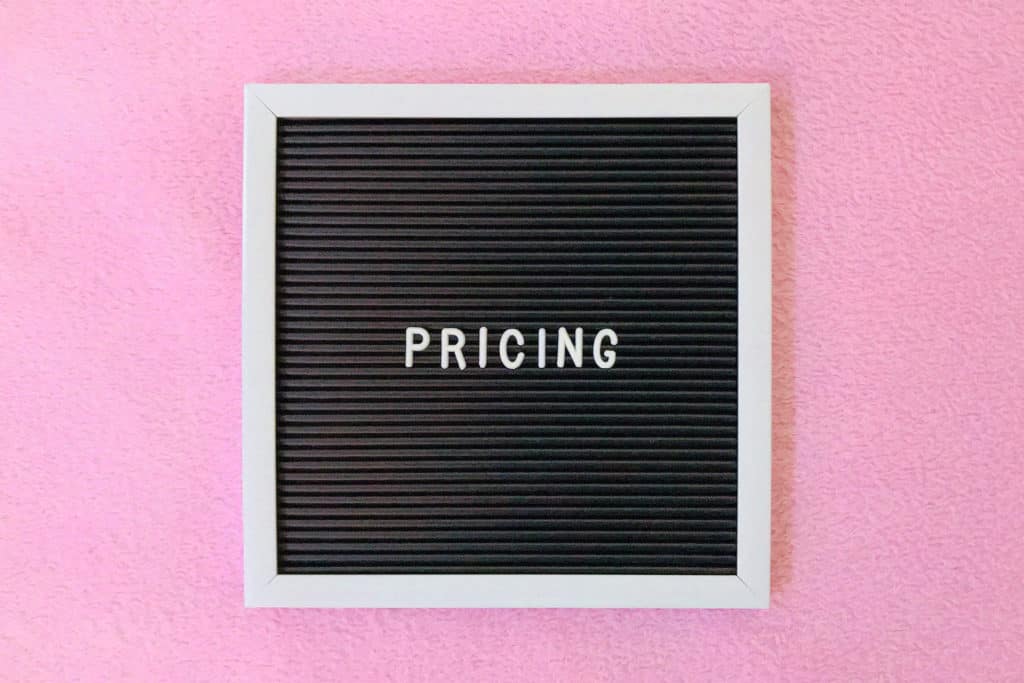The reality of running a business is that the concepts of the price of a product or service and the value of a product or service have to be balanced properly. In the argument of value vs. price, the best way to come out on top is by integrating appropriate pricing strategies.
This isn't as easy as it first appears, which is where a lot of companies slip up. You need to dedicate considerable time and effort to your pricing strategies to make the most of your business opportunities.
That's why we've noted the following key pricing strategy lessons to keep in mind as you manage your company.
1. First Things First: Calculate Your Total Costs
The first major aspect of pricing strategies to bear in mind concerns calculating the costs of your business. This is to ensure that anything you're selling, be it a product or service, will be making a profit at the price point you set.
There are several ways in which costs can affect your business, and these will depend on your specific sector. Some of the more common areas can include manufacturing costs, fixed costs (for your office/employees etc), and marketing costs.
Make sure to list every cost which will impact the creation of your product or service.
Once you've calculated your cost, you've completed the first stage in completing your pricing strategy. From here, you need to consider which of the three main pricing strategy categories are best for your business.
These three main pricing strategies are cost-based, value-based and product-based.
2. Cost-based Pricing Strategies
The most common approach to cost-based pricing after calculating your costs is cost-plus pricing. This essentially means you need to calculate a suitable markup on each item you sell, which will become your profit.
You need to ensure the markup you decide on is high enough for you to obtain a suitable amount of profit but low enough to remain competitive in the market.
Another form of cost-based pricing that works for some business models is price per hour or charge per hour.
This involves calculating all the relevant costs of your business and factoring them into an hourly rate. You must consider all costs of your business to accurately create this figure, including taxation and personal wages.
A final strategy that fits somewhat into cost-based, but is also a competitive strategy, is pricing at the going rate. The going rate is the current expected rate customers expect to pay for certain products or services in a particular area.
This can help you stay competitive but needs to be appropriately calculated to ensure you're still making a profit.
3. Value-based Pricing Strategies
Value-based strategies are less concerned with costs, and more concerned with the perceived value of a product or service.
One example of this is value pricing. This is where a business sets a price point based on what their customers believe what they're offering is worth.
It's vital to conduct significant market research if adopting this strategy. Otherwise, you could set a price point that isn't in line with the perceived value by consumers. Some of the worst product launches in history have been caused by companies launching at the wrong price point.
An alternative approach is marketing your business as a purveyor of luxury products or services.
If this is the case, you can aim to adopt a premium pricing strategy. This is only possible if your products or services are perceived as worth their price in the eyes of your customers.
A buy now pay later model can help make price points for expensive products work for certain companies.
4. Product-based Pricing Strategies
Finally, we're going to detail some product-based pricing strategies. These are strategies specifically concerned with a particular product or approach.
As aforementioned, getting product launch prices right is vital to the success of a new company. One strategy is known as penetration pricing.
This is where a company sets an initially low cost on a new product, to gain an initial market share. After a certain boundary has been reached, the product then goes up in price.
The opposite of this approach is skimming pricing. As you might have guessed, this is an approach where a new product is launched at a high cost.
This high cost advertises the high value of a product and can help create excitement for a launch. This price can then later be lowered once profit margins have been reached.
Skimming can be more attractive in certain scenarios, as it's typically easier to lower a product's price rather than raise it. Ensuring that you build consumer trust is just as important as maintaining an appropriate pricing model.
One final product-based approach is what's called a loss-leading strategy. This is similar to penetration pricing but is a more drastic variation.
With a loss-leading strategy, a business starts selling a product or service at below cost. This means no profit is being made during the launch phases.
This is in order to create attention for a business launch, or to onboard a lot of initial customers. However, it is only possible for companies with a large amount of capital. This is so they can sustain themselves whilst they are operating at a loss.
Where Can I Find Out More About Pricing Strategies?
We hope this post has helped guide you towards thinking about key pricing strategies in a different way.
The above three categories all have their merits in different situations. When it comes to pricing, you need to individually assess your company in detail to ensure you know the right approach for you.
It's important to remember when it comes to pricing that you're not alone.
The team here at Lift Strategies are experienced in all forms of digital marketing and business strategies, including in regards to pricing strategies.
To find out more about how we can help you, contact us and we'll be happy to assist you further!









